How to transplant hippeastrum?
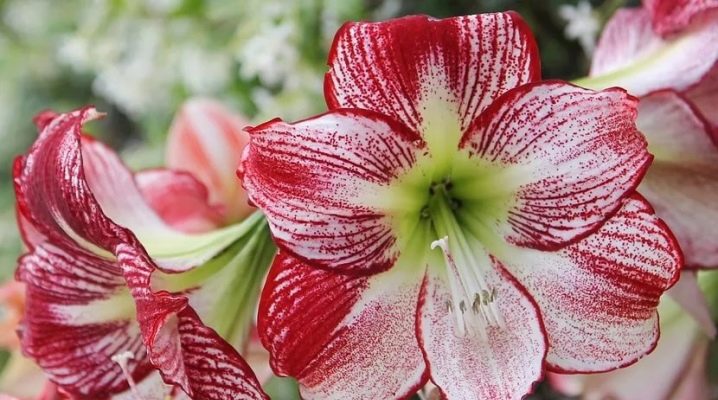
Hippeastrum is a beautiful bright flower that does not need special care. However, there is an important point in the content of this culture: timely and competent transplantation. The splendor and brightness of flowering depends on this procedure.
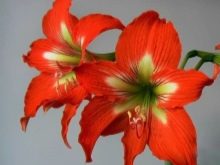
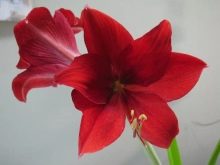
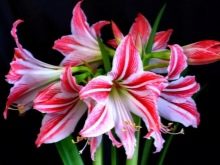
Description
The plant belongs to bulbous perennials. The bulb has a round or conical shape, a dense stem and closed scales. The size of one bulb in diameter is 5–10 cm. The culture has linear foliage, the structure of the leaf plate is grooved on the outside, its lower part is keeled. The leaves reach a length of 70 cm, their width is up to 5 cm.The color is green, although in some varieties the color of the leaves can be cast with a reddish tint.
The inflorescence is 2–6 bisexual flowers up to 15 cm in length and up to 25 cm in diameter. Peduncle - 35–80 cm. Flowers bloom in the form of a funnel or tube, have long petioles. The buds can be scarlet, burgundy, orange, pink, white and other colors. The fruit is a box in which seeds ripen with excellent germination.
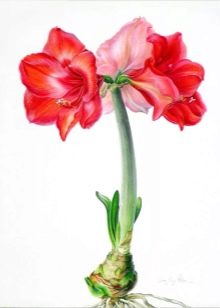
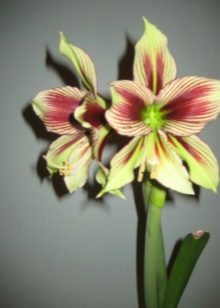

Before you start growing hippeastrum at home, you should familiarize yourself with the features of this culture in advance:
- light and white varieties produce a small amount of quality seeds;
- in summer, the plant will be more comfortable in the garden;
- the flowering period of the culture can be adjusted independently;
- flowering duration - 10 days;
- only large bulbs are used for forcing;
- the most important stage in the maintenance is the correct transplant.
When to transplant?
If the culture does not bloom for a long time, then, probably, some conditions of detention have not been observed: for example, a deficiency of useful elements in the old soil leads to a painful condition. Hippeastrum transplant will help in solving the problem. It is necessary to study the life stages of the plant in order to know exactly when it is best to carry out the procedure. The most favorable terms for transplanting:
- before the resting period of the bulb;
- during the first signs of development after a period of rest;
- until the arrow with buds is thrown out;
- after flowering and cutting the arrow.
In addition, the plant needs to be transplanted after purchase, since a purchased pot and old soil will not bring a productive result.
Adult specimens need to be replanted once every couple of years. For a young culture, the procedure is carried out every year. For any plant, young or adult, it is necessary to renew the topsoil once a year. The best time of the year for transplanting is spring.
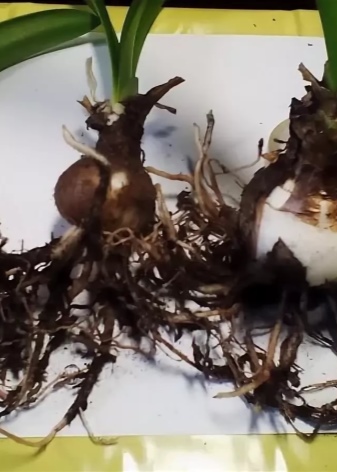
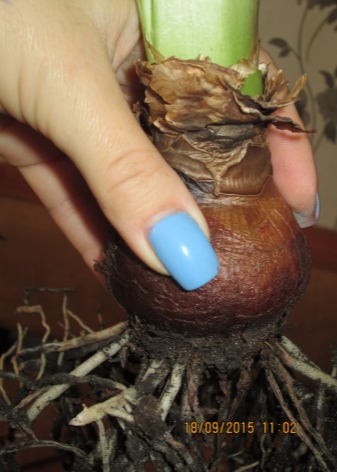
Transfer
To transplant a plant, first select a container. Choose a pot that is a few centimeters larger in diameter. Do not take a container that is too spacious, since the plant in this case will spend energy on the formation of children, and not on flowering. There must be a distance between the walls of the container and the bulb maximum 2 cm. The culture is distinguished by a powerful and well-growing root system, and therefore better choose a low but wide container.
A ceramic pot is ideal. This material allows the roots to breathe.
In addition, some specimens reach a lot of weight, and a container made of light materials may not support the mass of a flower. For group planting, a long container is suitable, in which case the gap between the bulbs should be 10 cm.
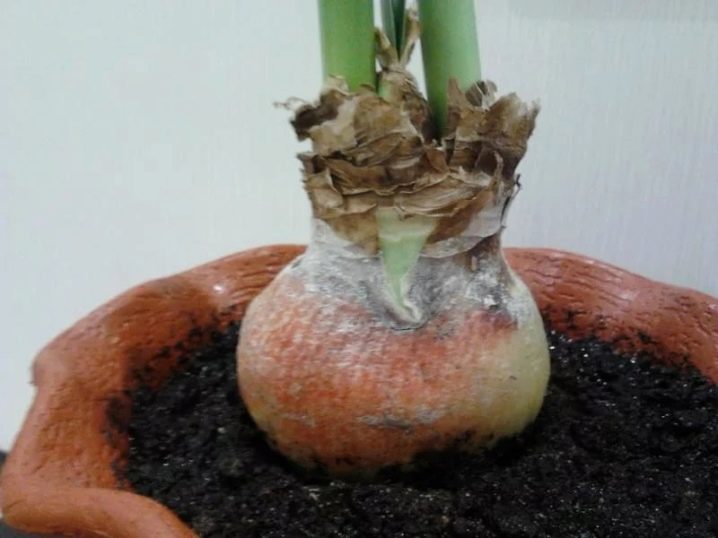
And you also need to prepare the ground. The most favorable soil structure for the culture is loose. To achieve a high-quality soil composition, combine in equal parts:
- sod land;
- leafy ground;
- humus;
- sand.
Prepare the onion.
- Get the planting material, clean the head from dry scales to clean white fabrics. The cleansing procedure will rid the bulb of bacteria and activate full-fledged development.
- Remove damaged and dry roots.
- Place the peeled onions in a potassium permanganate solution for half an hour, and then dry well.
- If there are small children, then they will be eliminated so that they do not take away the strength from the parent bulb. If the florist plans to multiply the culture, then the children should be kept, and then transplanted into a separate container, where they will begin to bloom in the third year.
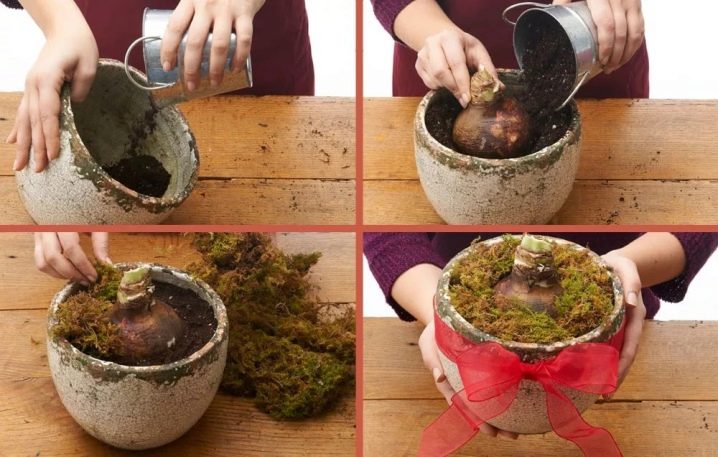
When everything is ready, you can proceed directly to the transplant. It is performed step by step.
- Create drainage at the bottom of the pot, such as expanded clay or crushed bricks. You can also put one stick of complex fertilizer there.
- Pour soil into the container.
- Plant the bulb in the ground. This should be done in such a way that the onion protrudes 1/3 above the surface.
- Compact the soil around the plant and moisturize the soil.
- Place the pot in a well-lit, warm place.
How to transplant hippeastrum, see below.
Care advice
Transplanting is the most important stage in the life of a plant. However, for the full development of a flower, it is required to follow a few more simple rules.
- The plant needs frequent fertilization.... Top dressing is applied before and during flowering, as well as for the development of children. The most preferred option is mullein solution. In the summer, you can feed the culture once a decade. During the dormant period, which usually lasts from October to January, the plant does not need to be fertilized. And also mineral fertilizers can be used as top dressing at different periods. For example, at the beginning of the growing season - nitrogen fertilizer (1 tsp per bucket of water), in the middle - phosphorus fertilizer (2-3 liters per bucket of water). Another important rule: prepare weak solutions as top dressing.
It is better to water the flower several times with a slightly diluted product than once with a concentrated one.
- In the natural environment, culture grows in southern countries, and therefore it is used to an abundance of warmth and light. Place the pot on a southern, southeast, or southwest sill. When located on the north side, the plant may not bloom. Don't be afraid to place the crop in direct sunlight, but try to arrange for diffused light. This can be done, for example, with a tulle curtain.
- In summer, the temperature regime must be maintained within the range of + 23– + 25 °. In the winter months, when the dormant stage begins, the thermometer should be at the level of + 10– + 13 °.
- Beware of overflowing the plant. In summer, moisten the soil only when the top layer is dry. With the onset of autumn, the frequency of watering is reduced: during this period, the culture is preparing for rest, so it sleeps and does not need moisture. In the spring, it is also important not to overdo it with watering, since during the period of pasture of the bulb, the plant absorbs nutrients not from the soil, but from the bulb itself. If moisture accumulates in the pan, the root rot process may begin.
- There is no special need for spraying the flower, but to maintain a beautiful appearance, it is recommended to periodically dust the leaves.
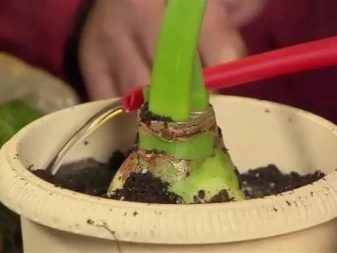
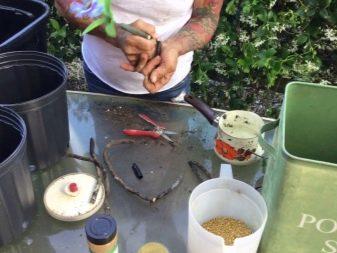

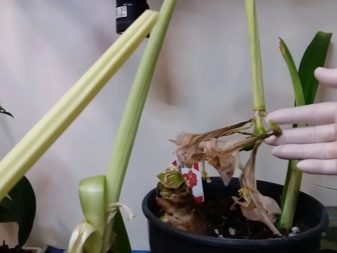




























The comment was sent successfully.